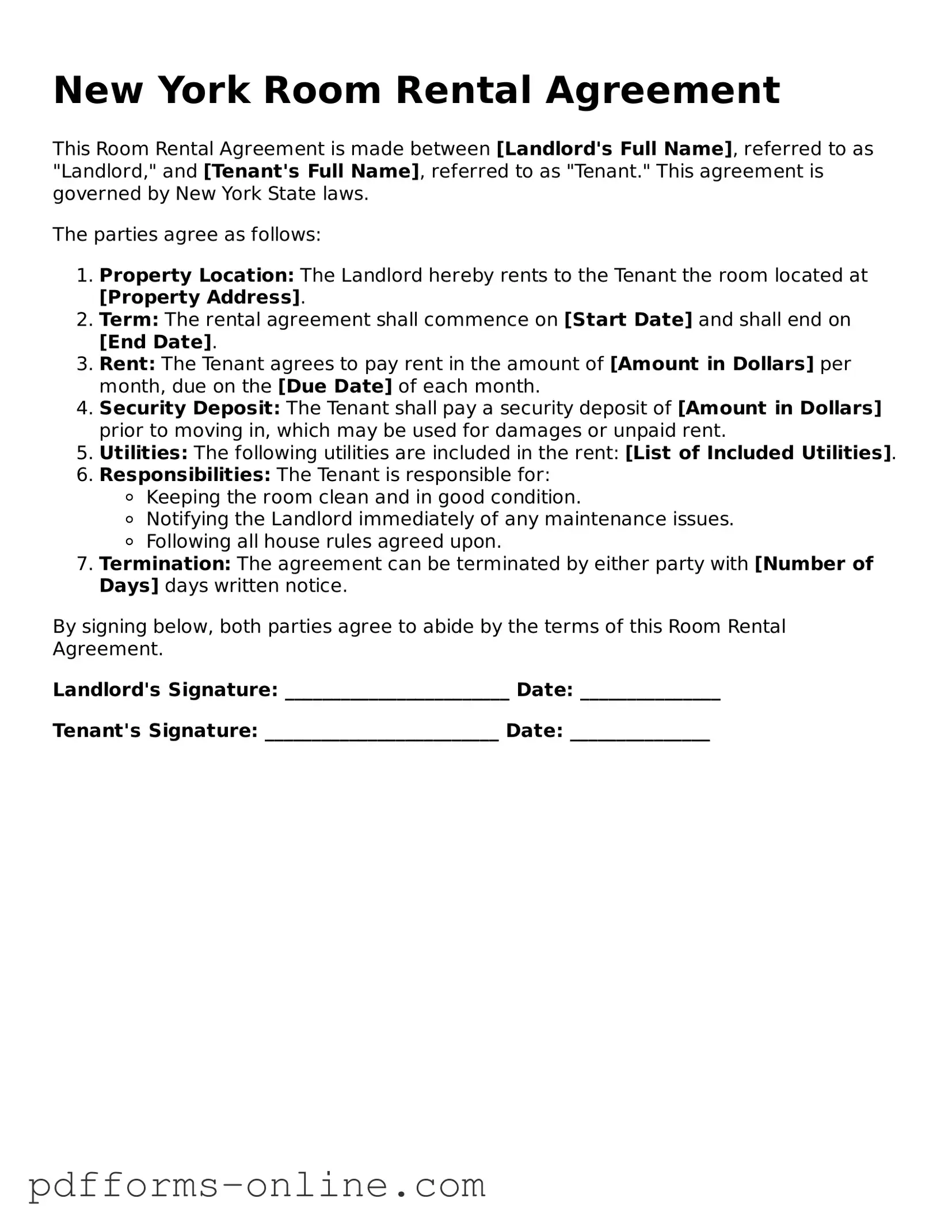The New York Lease Agreement is similar to the Room Rental Agreement in that both documents outline the terms and conditions of renting a property. They specify the duration of the rental, the amount of rent due, and the responsibilities of both the landlord and tenant. However, a Lease Agreement typically covers a longer rental period, often a year or more, while a Room Rental Agreement may cater to shorter stays, such as month-to-month rentals. Both documents serve to protect the rights of both parties involved in the rental arrangement.
The Sublease Agreement is another document that shares similarities with the Room Rental Agreement. In a sublease, the original tenant rents out their room or apartment to another individual, creating a new tenant-landlord relationship. Like the Room Rental Agreement, it details the rental terms, including rent amount and duration. However, the original tenant remains responsible for the lease with the landlord, which adds a layer of complexity not typically present in a standard Room Rental Agreement.
The Rental Application is also related to the Room Rental Agreement. This document is often completed by prospective tenants before entering into a rental agreement. It gathers essential information, such as employment history and references, to help landlords assess the suitability of applicants. While the Room Rental Agreement formalizes the rental terms, the Rental Application is an initial step in the rental process, aiming to ensure that the landlord finds a reliable tenant.
The Move-In Checklist can be compared to the Room Rental Agreement as it documents the condition of the rental space before a tenant moves in. This checklist helps both landlords and tenants note any existing damages or issues, thus preventing disputes when the tenant moves out. While the Room Rental Agreement outlines rental terms, the Move-In Checklist focuses on the physical state of the property, ensuring transparency and accountability.
The Eviction Notice is another document that relates to the Room Rental Agreement. If a tenant fails to comply with the terms outlined in the Room Rental Agreement, the landlord may issue an Eviction Notice. This document formally communicates the landlord's intention to terminate the rental agreement and outlines the reasons for eviction. Both documents are crucial for maintaining order and clarity in the landlord-tenant relationship.
The Security Deposit Agreement is similar to the Room Rental Agreement in that it details the terms surrounding the security deposit required by landlords. This agreement specifies the amount of the deposit, the conditions for its return, and any deductions that may be made for damages. While the Room Rental Agreement covers the overall rental terms, the Security Deposit Agreement focuses specifically on the financial aspect of the rental arrangement.
The Pet Agreement is another related document, particularly for rentals where pets are allowed. This agreement outlines the rules and regulations regarding pet ownership within the rental property, including any additional deposits or fees. Like the Room Rental Agreement, it establishes expectations for both the tenant and the landlord, ensuring that both parties understand their rights and responsibilities concerning pets.
Lastly, the Roommate Agreement can be compared to the Room Rental Agreement, especially in situations where multiple tenants share a rental space. This document outlines the rights and responsibilities of each roommate, including rent payment, shared expenses, and house rules. While the Room Rental Agreement is between the landlord and tenant, the Roommate Agreement focuses on the relationships among tenants, ensuring harmony in shared living situations.
